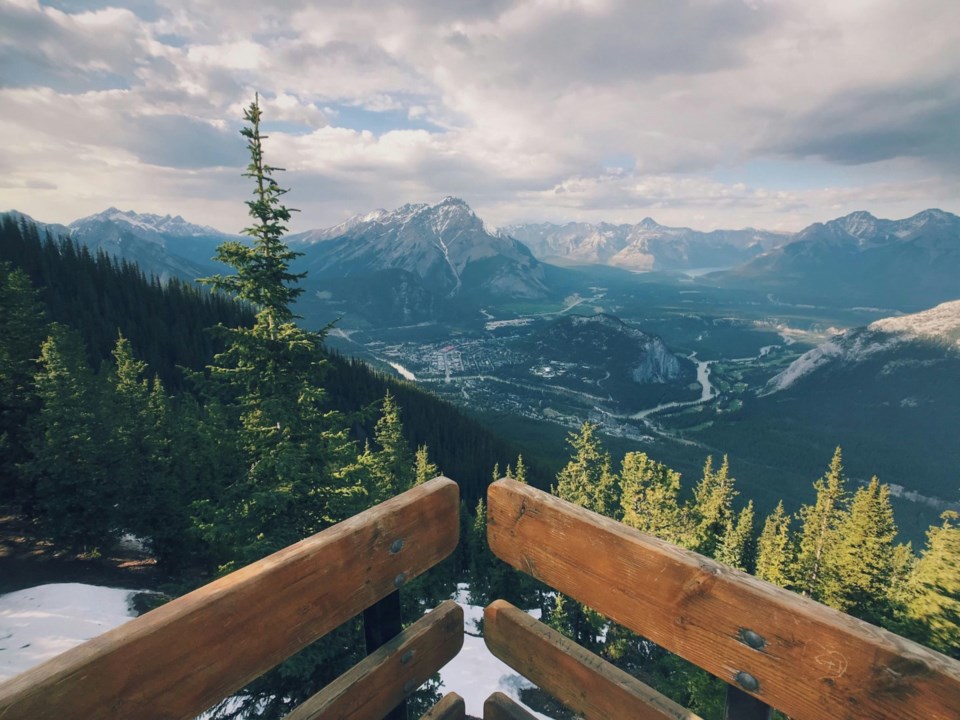The name Brewster has been tied to Banff for almost as long as the town has existed. The legendary bus and tour company can trace its roots back to 1886 when Ontario-born John Brewster brought his family to the town and established a dairy business.
With the iconic Banff Springs Hotel as the dairy’s biggest customer, John’s sons began offering hotel guests guided tours of local fishing spots and scenic viewpoints. Within a few years, the tours grew into a full-blown sightseeing business.
Today, the name Brewster is visible throughout Banff National Park, its familiar blue buses travelling the Icefields Parkway, shuttling passengers to and from Calgary Airport and, through its parent company, offering a broad range of tourist experiences.
It is not, however, a Canadian company anymore.
Brewster is part of the VIAD group, an Arizona-based tourism and entertainment company with operations in the United States, Canada, the United Kingdom, Europe, Iceland, and the United Arab Emirates via two divisions: GES and Pursuit. Although the name will not be familiar to most of you, it might help to know that it rose from the ashes of the once-ubiquitous Greyhound bus line.
Slowly and steadily, the Pursuit division of VIAD has been tightening its grip on the tourism features in western Canadian national parks to the point that local businesses are worried they are about to get choked out. It controls many of the travel attractions and hotels in Banff, Jasper, and Waterton Lakes (in southern Alberta), in addition to its U.S. Denali and Glacier properties and Iceland’s Kenai Fjords.
Local tourism operators, like Charlie Locke, owner of Lake Louise Ski Resort & Summer Gondola, are barking back at Pursuit’s monopoly status.
“It is a travesty that the major attractions in both Banff and Jasper Parks will be owned and managed by an American company whose primary goal is to maximize profits at the expense of Canadians and locally owned attractions,” Locke wrote in a July 12 letter to Parks Canada.
He went on to say in the letter that Pursuit’s monopolistic practices are driving the resort to re-evaluate its plans to invest $30 million for a new mountain top lodge, and an additional $20 million in upgrading a lift.
Adam Waterous, who operates Mt. Norquay Ski Resort just north of Banff, calls Pursuit’s increasing control “a major national scandal.” Pursuit, he notes, operates the Banff Gondola at Sulphur Mountain, Lake Minnewanka Cruise, Columbia Icefield Adventure, Jasper’s Maligne Lake Cruise and the Columbia Icefield Skywalk. Collectively, the features make up the bulk of the attractions in those parks. The company also owns the Brewster Express bus line and 10 hotels throughout the mountain parks. With the recent $25-million purchase of the Jasper SkyTram, Waterous calculates Pursuit’s market share in the Banff and Jasper parks will exceed 90 percent.
While Locke and others say the company operates a quality bus service at a fair price, there have also been concerns about price increases at some of Pursuit’s attractions. I checked the prices for the Banff Gondola on Sept. 14, for example, and saw an adult fare was set at $86. The Columbia Icefield Skywalk was priced at $94 (including one child admission), and a bus tour onto the icefield was priced at $276, including one child admission.
Travel blogger Liisa Ladouceur, who rode the gondola in 2022, described the pricing as “.”
“Banff Gondola tickets operate on a ‘dynamic pricing’ system,” she wrote in her blog. “Meaning the price you’ll pay depends on the day you visit, and how far in advance you buy. Since we decided at the last minute in high season, I paid $77.70. Ouch!”
The nationalist in me finds it sad that much of Canada’s most cherished natural areas are, in effect, “owned” by a U.S.-based conglomerate. Yet, in principle at least, that is free enterprise doing its thing.
What I don’t get is how the minds within Parks Canada work. How could a federal agency, whose mandate includes a commitment to “as a first priority, the natural and cultural heritage of our special places and ensure that they remain healthy and whole,” be so asleep at the switch as to let one company get such a death-grip on these attractions?
Naturally, they ain’t talkin’. But critics are not hard to find.
“Decisions are increasingly being made by distant bureaucrats with little connection to a local sense of place,” parks watchdog Ward Cameron. “As backcountry trails began to erode, bridges to collapse and boardwalks to rot, Parks Canada allowed skywalks, via ferratas1, summer ski hill operations, and gondola expansions – all in the name of bringing more and more and more people through the gates.”
Doug Firby is an award-winning editorial writer with over four decades of experience working for newspapers, magazines and online publications in Ontario and western Canada. Previously, he served as Editorial Page Editor at the Calgary Herald.
A “ferrata,” short for via ferrata (Italian for “iron path”), is a protected climbing route typically found in mountainous areas. It consists of a steel cable fixed to the rock at regular intervals, along with metal rungs, ladders, and bridges. Climbers secure themselves to the cable using a special harness with two leashes, allowing them to safely ascend steep and challenging terrain without traditional rock climbing skills. Ferratas allow non-expert climbers to experience high-altitude routes.
©




